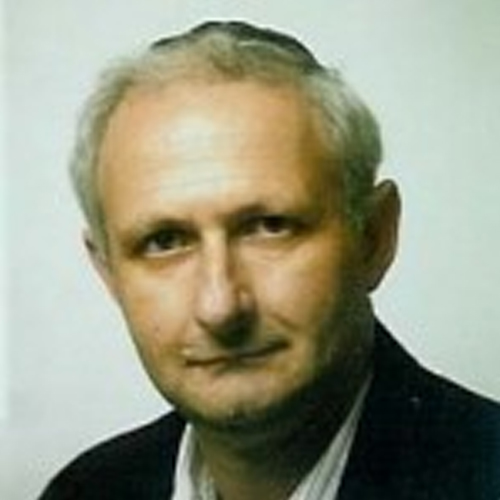
- B.Sc. 1971, M.Sc. 1975 (Technion)
- Dr. Ing. 1978 (TU Clausthal, Germany)
Prof. Bamberger was the acting head of the foundry laboratory at the Israel Institute of Metals before joining the Department of Materials Sience & Engineering in 1982. He was a visiting scientist at the Metall-laboratorium of the Metallgesellschaft AG in Frankfurt, Germany in 1983, at the Laser-application Laboratory of the DLR in Stuttgart in 1988 and at the University of Tennessee Space Institute – Center for Laser Applications in 1995. During 2000-2001 Prof. Bamberger was a visit Professor at MIT and in 2007 at the Technische University Munich. He is the chairman of the Casting and Solidification Committee of the Israel Metallurgical Society and a member of the Verein Deutscher Giessereifachleute. In 1996-2000 Prof. Bamberger served as the head of the scientific committee of the Israeli consortium for the development of Mg castings. He initiated and led the EC consortium IDEA in which new Mg alloys for aviation applications were developed.
The fields of interest of our group are processing of materials and their simulation, laser surface treatments as well as casting and solidification of metals. In the current study of laser surface alloying, we are seeking to understand the characteristic parameters of the laser treated layer solidification, as well as its microstructure and properties. The solidification of continuously cast Mg-alloys as well as other non-ferrous metals were computer simulated using a numerical solution of the transient heat conduction equation. A subsequent research project characterized the solidification of Al, Cu and Mg-base alloys in chill and gravity die casting, thus improving the understanding of the microstructure typical for these casting methods. The microstructure, morphology and phase stability in Mg-Al-Sn-Zn based systems were determined and compared with calculated phase diagrams. The dependence of precipitation kinetics on the content of the alloying elements in Mg-base alloys was determined. These set the foundation for the development of new Mg alloys.
Recently, Prof. Bamberger develops a new code to simulate the Additive Manufacturing of Ti-6Al-4V by E-beam and Selective Laser Melting (SLM).
- Klachuk and M. Bamberger – Laser surface alloying of 1045 steel Ni-CrB2 powder. Materials Science and Technology, Vol. 26 pp. 1059-1067 (2010)
- Hazan and M. Bamberger – Development of non-chromate conversion coatings on AZ31 alloy: effect of Ni overcoat. Materials Science Forum. Vol. 765 pp. 602-606 (2013)
- Menachem Bamberger and Esther Kiperwasser-Karbian – Plasma treatment casting of cast Aluminium 6XXX wrought alloys. Materials Science Forum. Vol. 765 pp. 200-204 (2013)
- Bamberger, G. Atiya, S. Khawaled and A. Katsman – Comparison study of microstructure and phase evolution in Mg-Nd and Mg-Gd based alloys. Metallurgical Transactions Vol 45A PP. 3241-3253 (2014).
- Abd El Majid, M. Bamberger and a. Katsman – Mechanisms of nucleation and growth of metastable phases in Mg-Gd and Mg-Gd-Nd alloys. Nano Studies Vol. 7 pp 41-48 (2013)
- Wendt, B. Bronfin, L. Stutz, G. Kurz, S. Schmitt, M. Bamberger, D. Letzig – Twin roll casting of new Mg-wrought alloys for body protective safety equipment. Materials Science Forum Vols. 783-786, pp. 534-536 (2014)
- Abd El Majid, M. Bamberger and a. Katsman – Overaged samples and growth of eutectics Mg-6Gd-3.7Nd based alloys. Applied Mechanics and Materials, Vols 764-765, pp. 76-81 (2015)
- Menachem Bamberger – Austempered Ductile Iron: Composition, Treating, Simulation. In Encyclopedia of Iron, Steel and Their Alloys , edited by Rafael Colas and George E. Toten, CRC press Taylor & Francis Group 2016, pp.196-216, 2016.
- Laser Surface Processing for Improving Wear and Corrosion Resistance
- Solidification, Microsegregation, Phase Stability and Precipitation in Mg-base alloys
- Solidification, Heat Treating, Microstructure and properties of Austempered Ductile Iron (ADI)
- Additive Manufacturing of Ti-based alloys – processing and simulation


